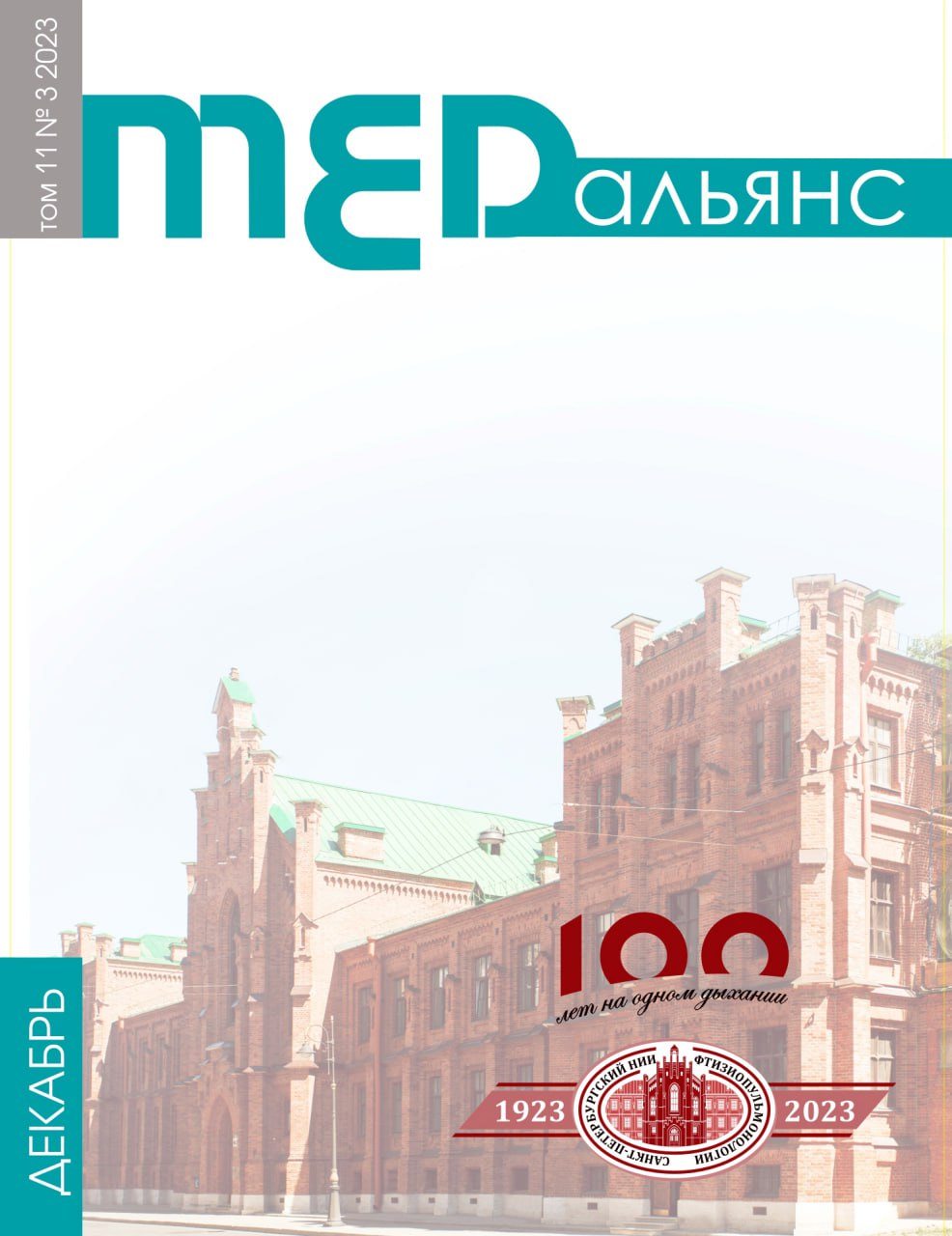Abstract
Disseminated lung disease (ZL) is a heterogeneous group of pathological conditions, the common feature of which is the radiological syndrome of pulmonary dissemination. The purpose of this study was to study clinical and radiological features in patients with pulmonary TB and mycobacteriosis. Research materials and methods. Medical records of 183 patients with a diagnosis (upon admission to the clinic) of disseminated lung process of unknown etiology (ICD10-Z03.0) were analysed at the pulmonary TB therapy department. The diagnosis was verified in all patients: disseminated pulmonary tuberculosis proven in 91 patients, mycobacteriosis of the respiratory organs in 59 patients, sarcoidosis of respiratory organs in 20 patients, nonspecific inflammation in 7 patients, oncology in 5 patients, and silicosis in 1 patient. Subsequently, 150 patients with proven mycobacterial infection were analyzed. Results. Upon comparison, honestly significant differences between tuberculosis and mycobacterial infection (mycobacteriosis) have been established: tuberculosis is significantly more common in men, with the lesion, as a rule, of the upper lobe localization (82.4%), positive tests (Diaskin and Tspot) were found in 89%, bronchiectasis was significantly less common in patients with tuberculosis. In all patients with tuberculosis, the diagnosis was confirmed positive culture for MBT or MBT DNA by PCR. Conclusion. Mycobacterial infections of the lungs (tuberculosis and mycobacteriosis) have statistically significant differences in patients’ gender, lesion localization, presence of bronchoectases, and the results of such tests as Diaskin and Tspot.

